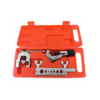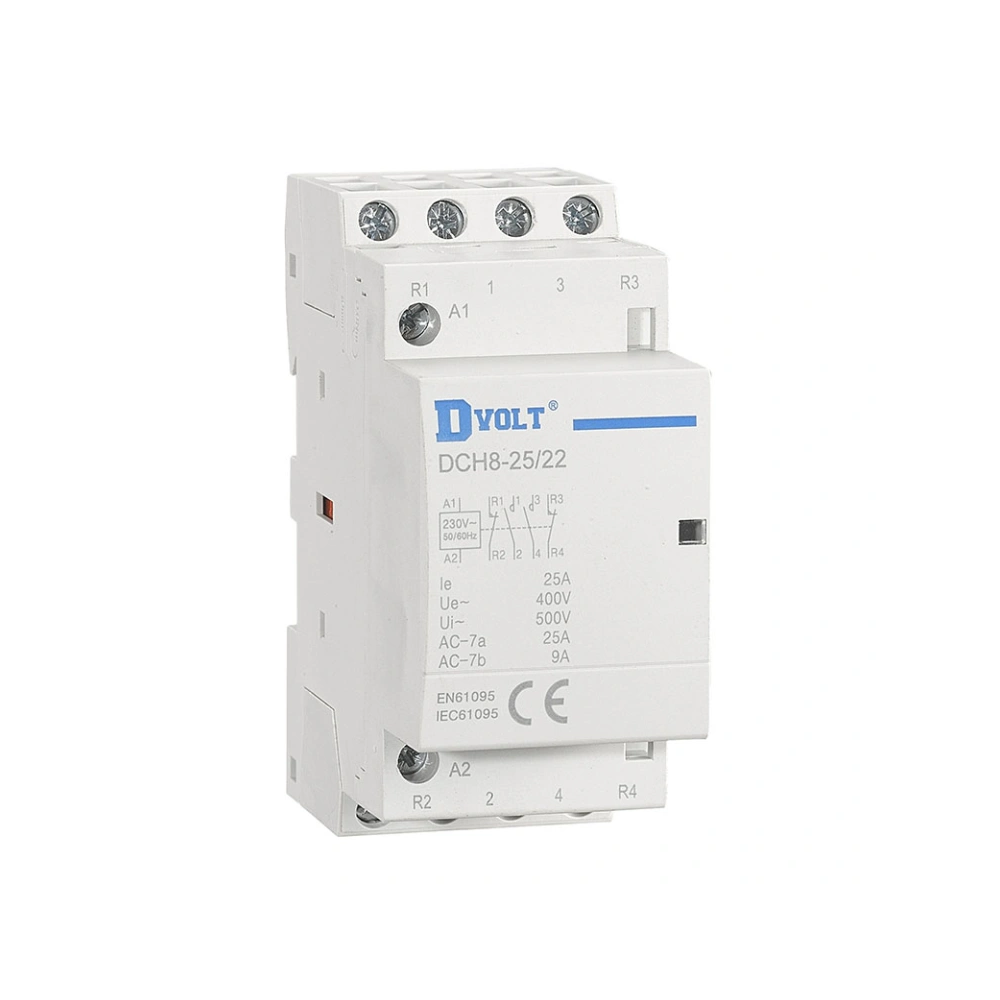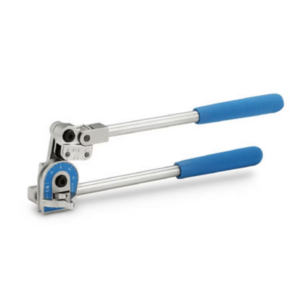🚚 Fast Delivery | ⭐ Best Quality | 📞 24/7 Support
+971 2 552 3918
info@coolwaybm.com
- Power Tools & Machinery
- Fire and Safety Equipement
Fire and Safety Equipement
- Adhesives
- Plumbing & Sanitary
- Packing Materials
Packing Materials
- Abrasives
- Carpentry
- Welding Accessories
Welding Accessories
- Fasteners
- Lock & Furniture Accessories
Lock & Furniture Accessories
- A/C Refrigeration
- Electrical
Electrical
You can add any HTML here
We suggest you to create a Saved Template in Dashboard -> Templates -> Saved Templates and use it by switching content type above to Saved template.
Overview of Contactors
A contactor is an electrically controlled switch used to control the flow of electricity in various industrial and commercial systems. It is primarily used to switch high-power electrical circuits, such as motors, lighting systems, and heavy machinery, from a remote location. Contactors are a key component in ensuring the safe and efficient operation of electrical systems, as they allow for remote control and automation while handling large electrical loads.
Contactor operation is based on an electromagnetic principle, where an electromagnet is activated to pull contacts together, completing the circuit and allowing current to flow. When the electromagnet is de-energized, the contacts open, interrupting the circuit and stopping the flow of electricity. This on/off control is essential for systems like HVAC, industrial machines, and automation processes.
Types of Contactors
- Electromagnetic Contactors: The most common type of contactor, electromagnetic contactors use an electromagnet to close the electrical contacts. These are widely used in industrial motor control, HVAC systems, and lighting applications.
- Solid-State Contactors: These contactors do not have moving parts and instead use semiconductor devices to switch the electrical load. Solid-state contactors offer faster switching times, improved durability, and better efficiency, particularly in high-speed operations or where frequent switching is required.
- Reversing Contactors: Used in applications where motors need to change direction, reversing contactors use two sets of contacts that can alternate the direction of current flow, enabling the reversal of motor rotation.
Applications of Contactors
Contactors are widely used across many industries to control various types of electrical equipment. Their primary function is to safely switch large electrical loads, and they are an essential component in automation, motor control, and industrial systems.
- Motor Control: Contactors are critical in starting and stopping motors in industrial machines, pumps, and HVAC systems. By remotely controlling the electrical power supplied to the motor, contactors enable operators to control motor operation without direct interaction with high-power circuits.
- HVAC Systems: In HVAC applications, contactors control compressors, fans, and other system components. They allow for efficient and safe operation by controlling power supply to the system, ensuring that the HVAC unit operates when needed and remains powered off when not in use.
- Lighting Systems: In commercial and industrial buildings, contactors are often used to control lighting circuits. They allow for centralized control, making it easier to switch multiple lights on or off simultaneously or as part of an automation system.
- Automation Systems: Contactors are commonly used in industrial automation systems, where they control a variety of machines and devices remotely. They are key components in systems like conveyor belts, robotics, and production lines.
- Overload Protection: Many contactors are paired with overload relays that protect motors and other equipment from electrical faults. If the current exceeds a preset limit, the overload relay trips, disconnecting the circuit to prevent damage.
In summary, contactors are essential components in the electrical control systems of motors, HVAC units, lighting, and industrial machinery. By providing efficient, safe, and remote control of high-power electrical circuits, contactors enable automation, improve safety, and enhance system performance across a wide range of applications.
There is £4.99 charge for delivery under £50 Orders. Additional charges will be imposed by our couriers for delivery to remote area, a surcharge may be levied to cover carriage to these areas.
CONTACTOR
د.إ1.00
Short Description
- Contactor: An electrical switch used to control the flow of electricity to a load, such as motors, lighting, or other heavy machinery.
- Function: Acts as a relay to open and close electrical circuits, allowing for remote control of high-power devices.
- Applications: Commonly used in HVAC systems, industrial machinery, and motor control circuits.
Overview of Contactors
A contactor is an electrically controlled switch used to control the flow of electricity in various industrial and commercial systems. It is primarily used to switch high-power electrical circuits, such as motors, lighting systems, and heavy machinery, from a remote location. Contactors are a key component in ensuring the safe and efficient operation of electrical systems, as they allow for remote control and automation while handling large electrical loads.
Contactor operation is based on an electromagnetic principle, where an electromagnet is activated to pull contacts together, completing the circuit and allowing current to flow. When the electromagnet is de-energized, the contacts open, interrupting the circuit and stopping the flow of electricity. This on/off control is essential for systems like HVAC, industrial machines, and automation processes.
Types of Contactors
- Electromagnetic Contactors: The most common type of contactor, electromagnetic contactors use an electromagnet to close the electrical contacts. These are widely used in industrial motor control, HVAC systems, and lighting applications.
- Solid-State Contactors: These contactors do not have moving parts and instead use semiconductor devices to switch the electrical load. Solid-state contactors offer faster switching times, improved durability, and better efficiency, particularly in high-speed operations or where frequent switching is required.
- Reversing Contactors: Used in applications where motors need to change direction, reversing contactors use two sets of contacts that can alternate the direction of current flow, enabling the reversal of motor rotation.
Applications of Contactors
Contactors are widely used across many industries to control various types of electrical equipment. Their primary function is to safely switch large electrical loads, and they are an essential component in automation, motor control, and industrial systems.
- Motor Control: Contactors are critical in starting and stopping motors in industrial machines, pumps, and HVAC systems. By remotely controlling the electrical power supplied to the motor, contactors enable operators to control motor operation without direct interaction with high-power circuits.
- HVAC Systems: In HVAC applications, contactors control compressors, fans, and other system components. They allow for efficient and safe operation by controlling power supply to the system, ensuring that the HVAC unit operates when needed and remains powered off when not in use.
- Lighting Systems: In commercial and industrial buildings, contactors are often used to control lighting circuits. They allow for centralized control, making it easier to switch multiple lights on or off simultaneously or as part of an automation system.
- Automation Systems: Contactors are commonly used in industrial automation systems, where they control a variety of machines and devices remotely. They are key components in systems like conveyor belts, robotics, and production lines.
- Overload Protection: Many contactors are paired with overload relays that protect motors and other equipment from electrical faults. If the current exceeds a preset limit, the overload relay trips, disconnecting the circuit to prevent damage.
In summary, contactors are essential components in the electrical control systems of motors, HVAC units, lighting, and industrial machinery. By providing efficient, safe, and remote control of high-power electrical circuits, contactors enable automation, improve safety, and enhance system performance across a wide range of applications.
There is £4.99 charge for delivery under £50 Orders. Additional charges will be imposed by our couriers for delivery to remote area, a surcharge may be levied to cover carriage to these areas.
Reviews
There are no reviews yet.
Buy more save more!
Buy from 2 to 4 items and get 10% OFF
on each productBuy from 5 to 8 items and get 15% OFF
on each product- Free shipping on all orders above 50,00
- No hassle returns, 30 days return
- Next day delivery within your country












Reviews
There are no reviews yet.